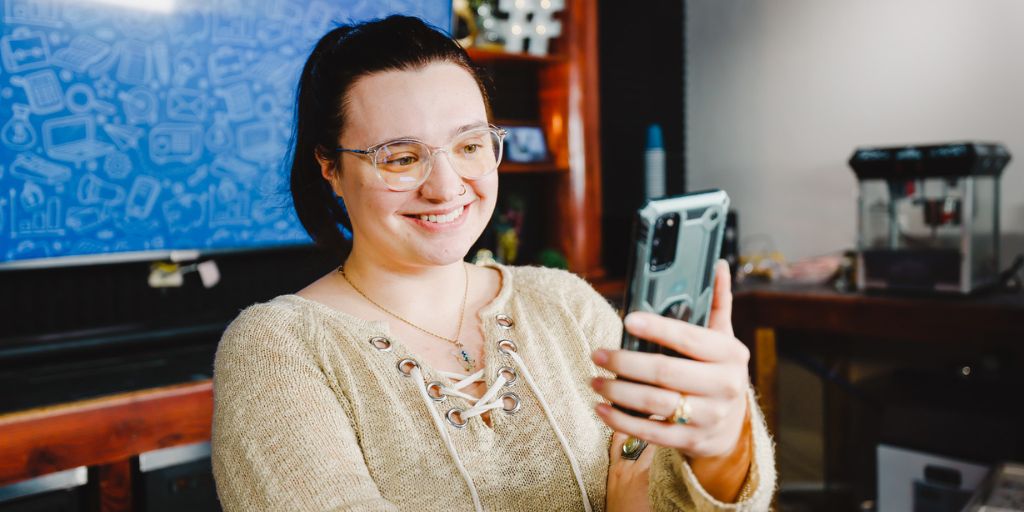
Why Personalization in Nonprofit Communications Is Essential
There are so many great causes we all can choose to give to. So, how do we, as donors, decide? And how can you, as a nonprofit leader, ensure that each appeal and ask you make has a greater chance of success? Hint: You can prioritize personalization in all nonprofit communications…
More and more research shows that personalization pays off when encouraging donors to be generous. For instance, a global study conducted by Accenture found that 44% of nonprofit donors would give more if they had a personalized experience with the organization they support. A significant number revealed they would increase donations if nonprofit communications were more personal.
These statistics no longer come as a shock. Brands and businesses have seen the impact of personalization in all forms of marketing communication. For example, McKinsey found that 71% of consumers have come to expect personalization when interacting with brands.
If you struggle to engage donors, volunteers, and those you serve, personalizing communication is the way to go!
What Does the Research Say about Personalized Communications for Nonprofits?
Producing great content from your nonprofit can encourage donors to give to your organization. However, that’s only one part of the equation. You must think long-term if you want to foster donor loyalty.
You need to use research-backed data to inform and make insightful developments in your communications strategy. It's something that many nonprofit leaders don't always think about, but it can have a significant impact on boosting donor support.
In an article published by Nonprofit Tech for Good, personalized communications for nonprofits via email newsletters produce better engagement and results. And it all starts with the subject line. When you personalize the email subject line, your donors are 26% more likely to open that email. Moreover, personalized CTAs are 202% more effective than basic CTAs.
Twilio.org’s State of Nonprofit Digital Engagement Report for 2022 provides valuable insights that you can use to improve the personalization of your nonprofit communications.
Let’s look at some of the most important insights from this report that you can integrate into your communication strategy for improved results…
Donors Expect More Personalized Interaction with Nonprofits
If you want donors to have a better experience interacting with your nonprofit, you should invest more in personalization. These stats from the State of Nonprofit Digital Engagement Report 2022 demonstrate why:
- 45% of program participants cited that they expect personalized communications from nonprofits.
- 44% of the program participants prefer on-demand services, while 41% want more digital communication options.
Personalized nonprofit communications are one of the largest opportunities you can exploit to improve donor experience with your fundraising programs. By personalizing, you not only build engagement but also foster trust among donors. It also demonstrates your sincerity and genuine appreciation for your donors' generosity.
You can employ a customer relationship management (CRM) system to collect donor data and gain insight into the data. The CRM will inform your strategies in the future when interacting with existing and potential donors.
There’s a Gap in the Perception of Digital Experiences and Nonprofit Communications
It's clear that nonprofits understand the value of personalization. However, data from the State of Nonprofit Digital Engagement Report 2022 shows a difference between how well nonprofits think they’re doing and how well donors think they’re doing.
For example, 77% of nonprofits believe their current digital communications strategy is effective, while only 64% of program participants and donors agree.
The type of communication channel is where there is a significant gap in the perception among nonprofits and donors. Most donors prefer email communication and text messaging. However, many nonprofits put most of their efforts into social media. Therefore, it would be best to diversify your use of digital communication channels and track data to see where you can get results.
Generations Impact Communication Preferences with Nonprofits
The research data in this section is not surprising at all. Older generations prefer to communicate using established digital channels like email or text. Meanwhile, the younger generations prefer newer digital communication methods like video conferencing and messaging apps.
Take time to understand these differences and develop the right approach to improve nonprofit communications in your organization. Again, this reiterates the importance of conducting nonprofit market research, so you know whom to target and how to reach them.
How to Use Personalization in Nonprofit Communications
A fragmented donor communications approach is the bane of the nonprofit sector. This approach can be detrimental to your objective of gaining support from your donors. They may feel that there’s a lack of connection with the organization and its cause. Personalizing nonprofit communications is the best way to improve the donor experience, as it will make them feel more connected to your goals and objectives.
Here are the best ways to achieve personalization in communication and engagement with nonprofit donors…
1. Personalize Your Emails

Perhaps there’s a time and place for batching and blasting your subscribers with general emails. But not when the goal is to receive donations. Regardless, personalization of nonprofit communications is about more than just addressing their first name on the email subject line.
How well do you know your donors? If they've been contributing to your nonprofit for some time now, ensure you've collected enough data about them to drive them to continue their generosity. You can check the volunteer history, donation history, and interactions with your organization and include what you know in your emails.
Using these critical data points, your communications team can craft a message specifically addressed to that type of donor (or even a specific individual), fully realizing their motivations and interests. If you want to build the perfect ask, make sure you set up personalized ask ladders so you can encourage your donors to give the right amount when you need them to.
2. Employ Preferred Communication Channels
Your data analysis on your existing and potential donors should give you an insight into their preferred channels. Using the channels your specific target audience uses the most will elicit more engagement and ensure your messages are received.
There are two ways to determine your audience's preferred communication channels:
- Ask them directly through a survey or your current interactions with them.
- Examine the results of your communications efforts. You can determine their preferred communication channel based on the level of engagement.
Reading marketing data might seem complicated, but it's often quite straightforward. Key indicators to look at can be things like open rates and click-through rates for emails. Any half-decent nonprofit CRM should be able to indicate which channels are the most effective at actually getting donors to donate.
3. Build Marketing Campaigns for New Donors
One of the best ways to retain donors is to make new donors feel welcome. Your current donors will be happy to bring more people into the fold, which showcases your commitment to fostering a healthy relationship with your nonprofit donors.
Build a drip campaign with information that will incite curiosity from your audience. Create personalized templates and drafts that will make your emails stand out from others in the donor's inbox.
You can also build a new segment for new donors to ensure you craft your new donor messages differently from those that have been constituents of your nonprofit organization for a long time.
4. Take Note of Geographic Location
One factor that can impact your personalized messages in your nonprofit communications has to do with the recipient's geographic location. This is historically important for those organizations holding events and fundraisers in a specific area. For example, is there a way for attendees from far away to participate in or donate to this year’s fundraiser gala? This is a great opportunity to tailor that message to them.
Taking note of the donor's geographic location delivers more impact on your communication efforts. Most donors and supporters of your organization have close ties with their community. Therefore, addressing the community aspect in your personalized communications can make your message more compelling to them.
5. Evaluate Engagement Metrics
Imagine a fundraiser with no goal. How would you ever know when you’re successful?
Identify the key engagement metrics you must keep an eye on once you deploy your new communication methods. These success metrics allow you to measure how well your existing methods are doing and how you can improve them further if you are not yet hitting your fundraising objectives.
It's also crucial that you examine these metrics so that you know that your communication is actually improving and that you've engaged your audience.
Final Thoughts
Personalized nonprofit communications are a must if you want to increase your donor engagement for your organization and retain your existing donors. The ultimate goal is to use these communication channels to build a relationship with your donors. The more connection you have, the more they will help you achieve your objectives. Check out our guide to learn more about effective fundraising for nonprofits. You'll unlock valuable insights that successful nonprofit organizations use to maximize their donors!

